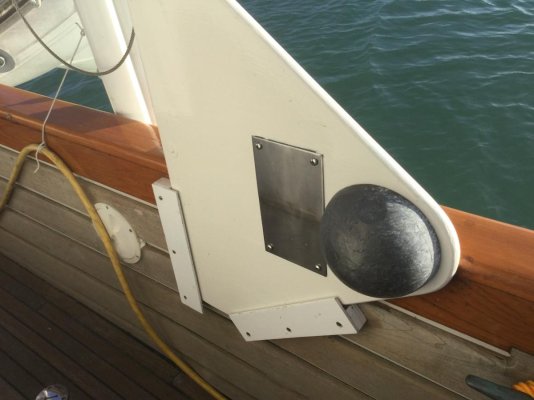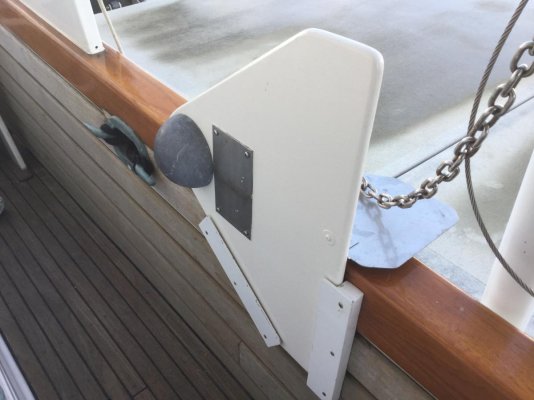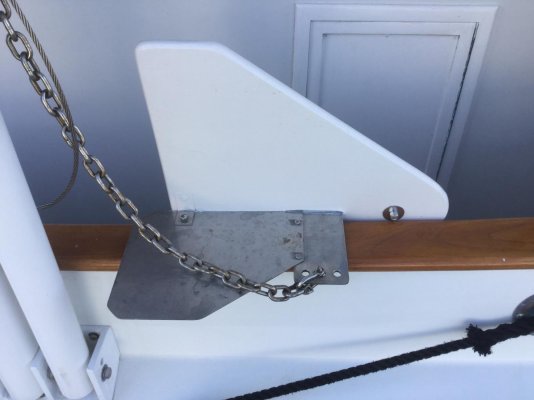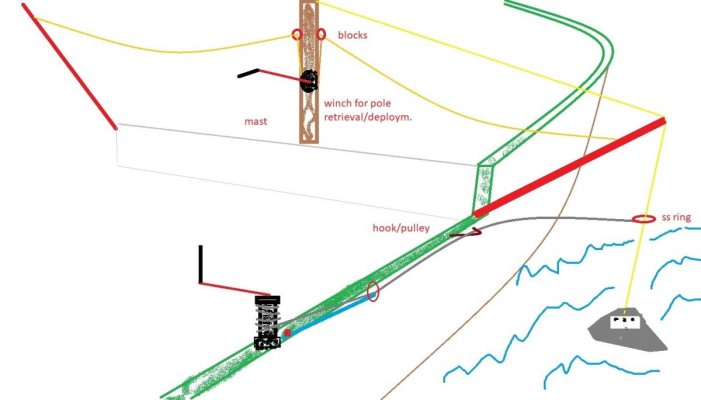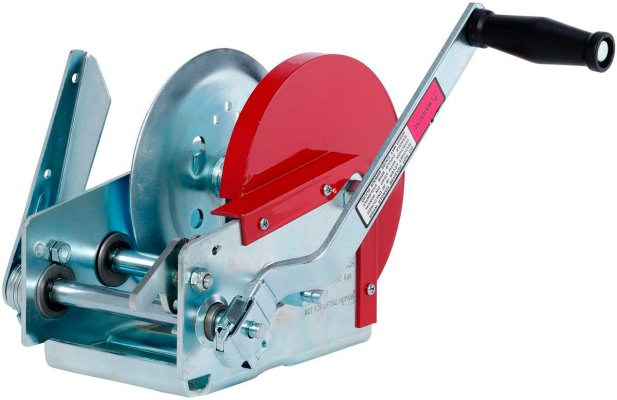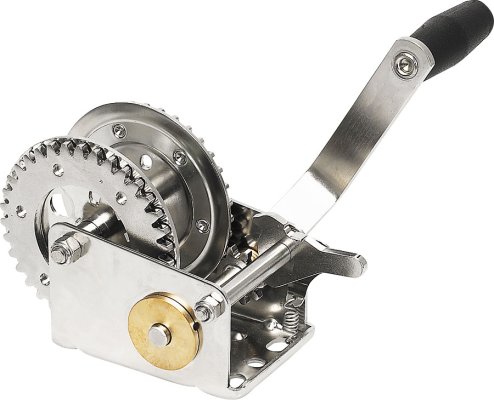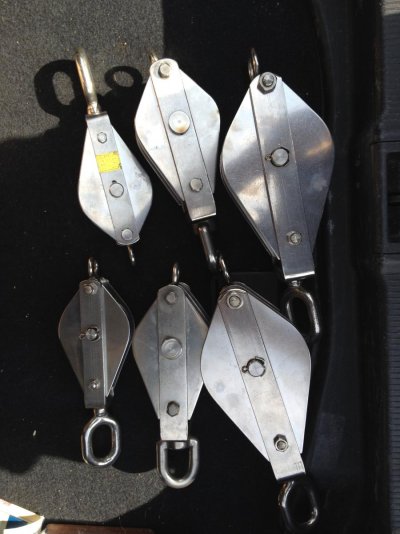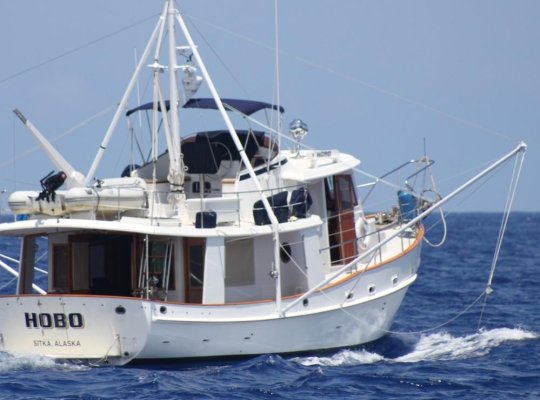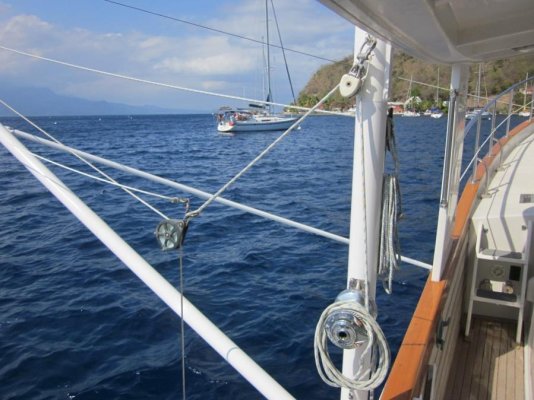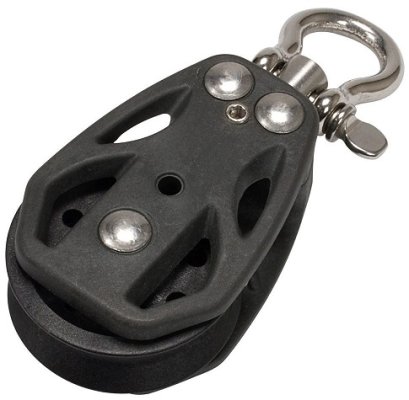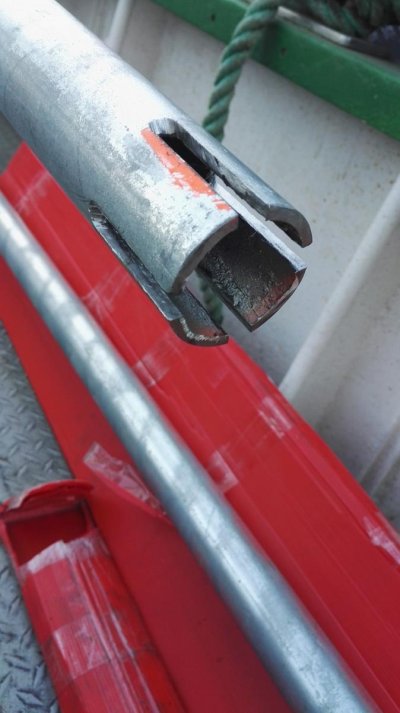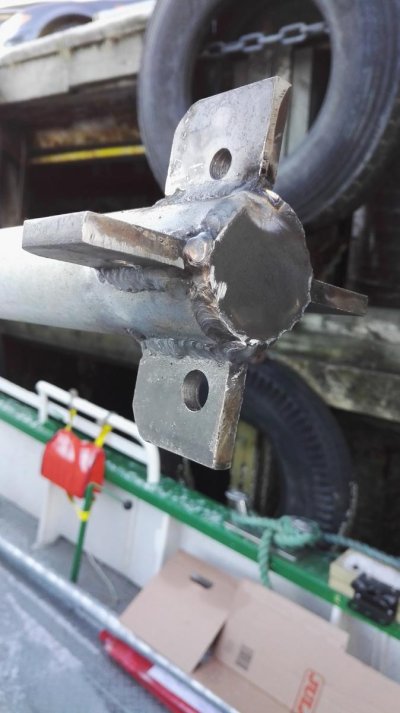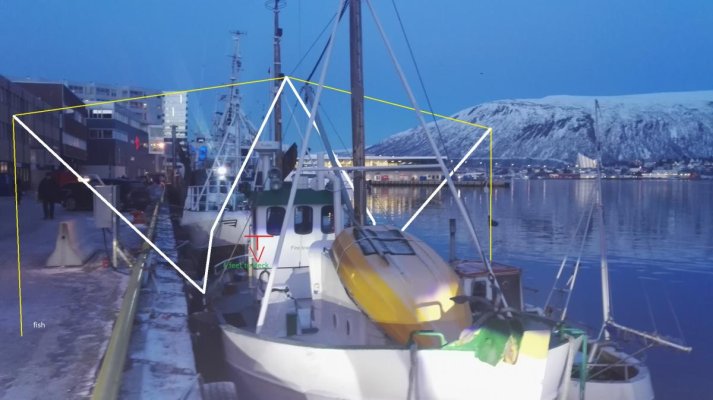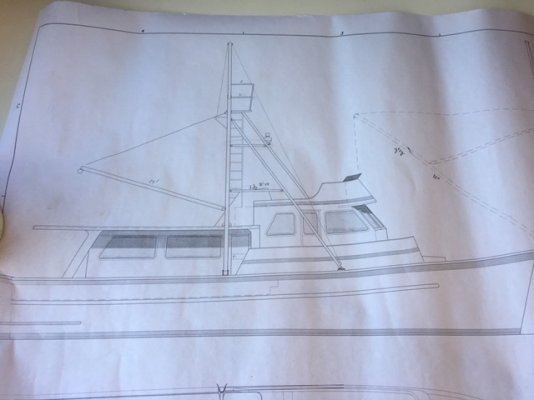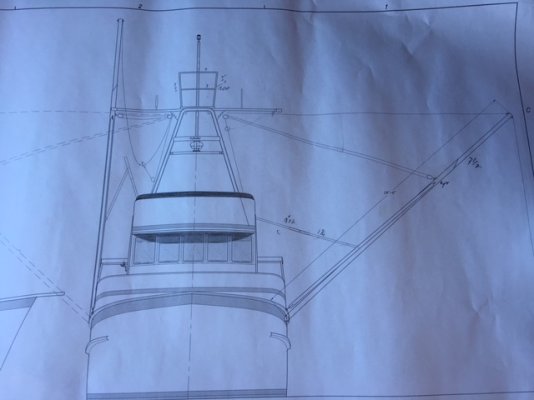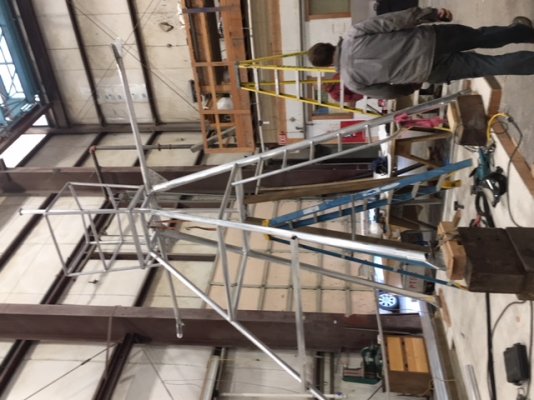...Wouldn't it be safer to deploy the poles first, then the vanes ? That is what I had in mind and planned to do.
I also plan to make the vanes from ply and round off all the edges, and paint them with epoxy. I was also thinking of maybe having a simple guide rail for the retrieval cable, that flips out when needed. The guide could be running from in front of the sailwinch and then pivot a foot or so to the side of the gunwale. That way I think it could be possible to reel the vanes in almost all the way to the top, without touching the hullsides too much. Larrys Hobo has the winches installed higher up on the mast poles, so I think they do almost all of the lifting...
The fish are deployed with the poles out. When we leave the dock, the poles are down. It’s real quick and easy to then deploy the fish.
Ours are made from 3/4” marina plywood. If I bump the side of the boat, no scratches or dings. We get about 5-10 years out of each one and then I replace the plywood. The plywood does get soft depending on how much they’ve been in the water. We use them at anchor for flipper stoppers and sometimes they soak for a few weeks at a time. I’ve met several comercial fisherman who have replaced the plywood with HDPE or similar.
We use the winches to bring the vertical line the fish hang from, to get them next to the boat, then I grab the wire/chain and manually lift the fish out of the water. I just down sized our fish from the larger size, about 300 square inches, to the next size, about 210 square inches. We’re not running the distances or large open water stretches any more and these should be easier to handle. The new ones were $145/each plus shipping. They come with an aluminum paint and I repainted them with a one part polyurethane.

